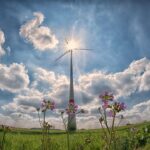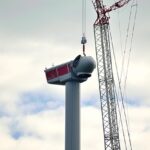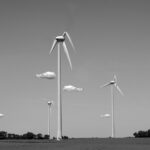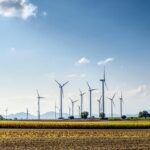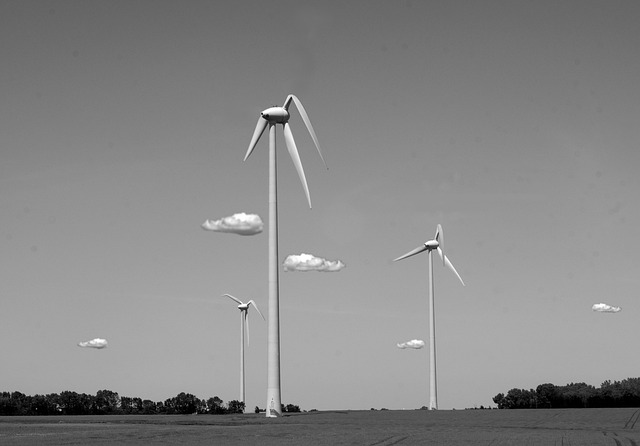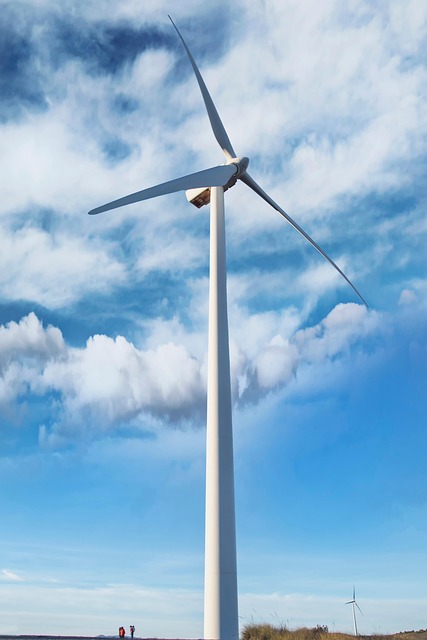The Green Dawn: Wind Power’s Role in Climate Solutions
The planet is at a crossroads, facing escalating climate crises that demand immediate and comprehensive action. Among the array of renewable energy technologies, wind power stands out as one of the most promising solutions. Harnessing the natural force of wind offers a sustainable, clean, and abundant source of energy. In this article, we explore the significant role of wind power in addressing climate challenges, its mechanisms, benefits, and challenges, as well as its future in the global energy landscape.
The Current Climate Crisis
Climate change is rapidly altering weather patterns, leading to extreme events like hurricanes, droughts, and wildfires. Scientists attribute these changes primarily to the increase in greenhouse gases (GHGs) in the atmosphere, largely from fossil fuel combustion for energy production and transportation. To mitigate the impacts of climate change, it is crucial to transition to renewable energy sources that can decrease our reliance on fossil fuels.
Understanding Wind Power
Wind power involves converting the kinetic energy from wind into mechanical power, which can then be used to generate electricity. Wind turbines, the primary technology used in harnessing wind energy, consist of large blades that spin when wind passes over them. This spinning motion drives a generator that produces electricity. Wind farms can be situated onshore or offshore, each offering unique advantages and challenges.
Benefits of Wind Power
Wind power provides myriad benefits, which position it as a vital player in climate solutions:
1. Low Greenhouse Gas Emissions
Unlike fossil fuels, wind energy generates electricity without emitting carbon dioxide or other harmful pollutants. By displacing fossil fuel energy sources, wind power significantly reduces overall greenhouse gas emissions, helping combat climate change.
2. Abundant and Renewable Resource
Wind is a limitless resource, making wind energy a sustainable alternative to finite fossil fuels. According to researchers, the global wind energy potential is vast, with the capacity to meet a significant portion of the world’s energy demands.
3. Job Creation and Economic Growth
The wind power sector has seen substantial growth in recent years, leading to job creation across manufacturing, installation, and maintenance. This growth supports local economies and fosters a new green job market that can drive inclusive economic development.
4. Energy Independence
Countries that invest in wind energy reduce their dependence on imported fossil fuels, enhancing national energy security. By harnessing domestic wind resources, countries can maintain more control over their energy supply and protect themselves from fluctuating fossil fuel prices.
5. Technological Advancements
Continuous innovations in turbine design, materials, and efficiency have driven down the cost of wind energy, making it one of the least expensive forms of new electricity generation. As technology evolves, further improvements in efficiency and capabilities are expected.
Challenges Facing Wind Power
Despite its numerous benefits, wind power is not without challenges. Addressing these hurdles will be essential for maximizing the viability of wind as a cornerstone of the energy transition:
1. Intermittency and Grid Integration
Wind energy generation is inherently variable, depending on weather conditions and geographical location. This intermittency can pose challenges for grid stability and reliability. Advanced energy storage solutions, smart grid technology, and diversified energy portfolios can help mitigate these concerns.
2. Land Use and Environmental Impact
While wind farms can coexist with agriculture and wildlife, there are concerns regarding their impact on local ecosystems. Site selection, careful planning, and technology improvements can address these environmental considerations, ensuring that wind power has minimal adverse effects on biodiversity.
3. Initial Investment Costs
Though the long-term operational costs of wind energy are relatively low, the initial capital required for installation can be significant. Policy mechanisms such as tax incentives, feed-in tariffs, and government grants can assist in lowering upfront costs to encourage investment in wind projects.
The Global Landscape of Wind Power
Wind power has experienced exponential growth over the last two decades. According to the Global Wind Energy Council, wind capacity worldwide surpassed 900 GW in 2020, representing an increase of nearly 60% in five years. This growth trend is projected to continue as countries recognize wind power’s potential in reducing emissions and achieving energy targets.
Leading Nations in Wind Power
Certain countries have emerged as frontrunners in the wind power sector:
China
China is the world’s largest producer of wind energy, accounting for a significant portion of global capacity. The government has aggressively pursued wind power as part of its strategy to combat pollution and reduce reliance on coal.
The United States
The U.S. ranks second in installed wind capacity, with Texas leading the charge as the top state for wind energy production. The increasing adoption of wind power has transformed rural economies and boosted local job markets.
Germany
Germany has been a pioneer in renewable energy, and wind power plays a crucial role in its energy transition. The country has invested heavily in both onshore and offshore wind farms, making substantial progress towards reaching its ambitious climate targets.
International Collaboration and Policy Frameworks
Global cooperation is vital in scaling wind energy successfully. International frameworks like the Paris Agreement establish targets for greenhouse gas emissions and encourage countries to commit to renewable energy goals. Collaborative research, technology transfer, and sharing best practices can enhance the effectiveness of wind power initiatives worldwide.
The Future of Wind Power in Climate Solutions
The role of wind power in climate solutions is anticipated to grow as technology continues to advance and awareness of climate change rises. Here are several emerging trends that could shape the future of wind energy:
1. Offshore Wind Expansion
Offshore wind farms are gaining momentum, particularly in regions with strong sea winds. These installations have the potential to produce substantial amounts of energy while minimizing land-use conflicts. Investment and innovation in offshore turbine technology are already underway, paving the way for a robust offshore wind sector.
2. Hybrid Energy Systems
Combining wind power with solar energy and energy storage systems can create a reliable zero-emissions energy portfolio. Hybrid approaches capitalize on the strengths of different technologies, balancing variability and ensuring supply meets demand.
3. Community and Distributed Wind Systems
Local communities are exploring small-scale wind projects that allow them to generate and consume their own energy. Community-owned wind systems empower individuals while promoting energy democracy and resilience.
4. Policy Advancements and Incentives
Governments are increasingly recognizing the importance of supportive policies for wind energy. Subsidies, tax credits, and renewable portfolio standards can drive investment in wind and facilitate a speedy transition to renewable energy.
Conclusion
As the world grapples with the pressing challenge of climate change, wind power emerges as a vital solution capable of driving a cleaner, more sustainable energy future. Its numerous advantages – including reduced emissions, job creation, and the potential for energy independence – make it an indispensable player in combating climate change. Addressing the challenges associated with wind energy through innovative technology, effective policy, and international cooperation will be crucial in realizing its full potential. The dawn of a greener, wind-powered world is on the horizon, offering hope for a healthier planet for generations to come.
